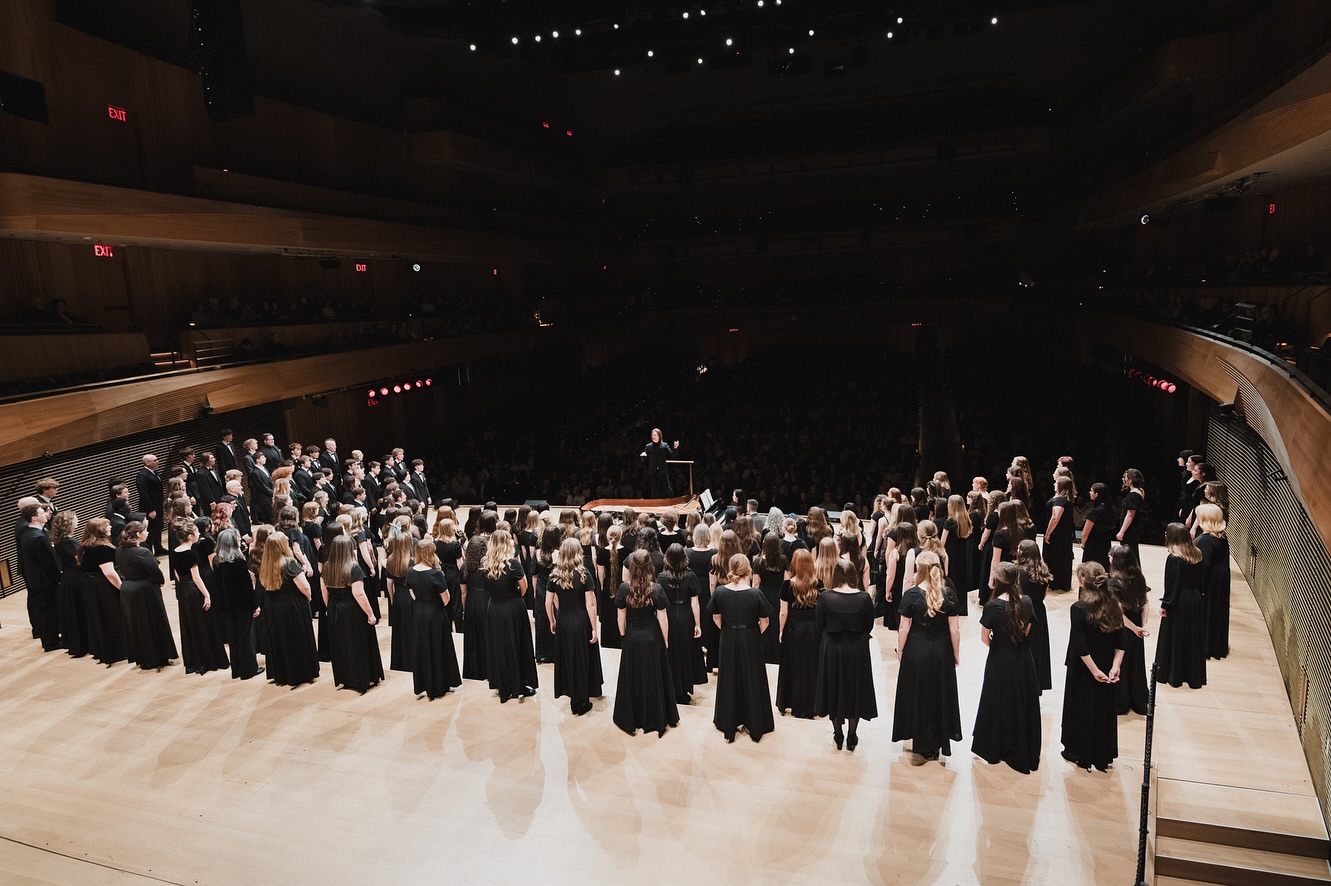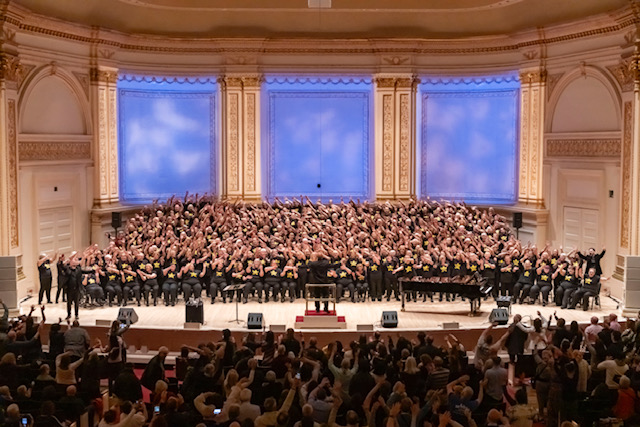Xiyu Deng, piano
Recorded at Williams Hall, New England Conservatory, Boston, MA
Recorded Live May 4, 2017
A recording by pianist Xiyu Deng entitled Inner Fantasies: A Live Concert Recording of Schumann and Brahms came to me this week to review, in advance of a release in late May on streaming platforms including Apple Music and Spotify, and many will be apt to enjoy it. Though there is hardly a shortage of recordings of anything by Brahms or Schumann, Xiyu Deng’s performances come as a breath of fresh air. Part of the performances’ freshness is that they are just that – live performances, recorded at Williams Hall of the New England Conservatory in 2017 at the pianist’s graduation recital. They have – particularly in the Schumann – a spontaneity and urgency that are often missing in studio recordings. No matter how skilled a recording technician is, there is a distinct difference between the feeling of a studio recording and that of a live concert – a difference not just heard, but felt emotionally. Studio recordings proliferate partly due to the fact that one slip can mar an otherwise magnificent experience; in the case of Xiyu Deng, however, she is also exceptionally accurate, and we are informed that “no edits or post-production were applied.” So, the end result is quite live and special.
For those unfamiliar with Xiyu Deng (as this reviewer was until now), she is a New York-based classical pianist who more recently completed her Doctor of Musical Arts degree at the Manhattan School of Music as student of Dr. Joanne Polk. Her notes do not supply information on her graduate studies (or teacher) leading to this recorded recital, but her performances of Schumann’s Davidsbündlertänze, Op. 6 and the Brahms Fantasien Op. 116 (all seven pieces, including three Capriccios and four Intermezzi) speak for themselves. Some poking around yields the fact that her teachers also have included Dr. Bo Tong at the Central Conservatory of Music in Beijing and Gabriel Chodos at New England Conservatory (student of Aube Tzerko, who studied with Artur Schnabel). She has been awarded prizes at the BNP Paribas ‘Rising Star’ Piano Festival, New England Conservatory Honors Competition, and the Open Class at the 17th Hong Kong-Asia Piano Open Competition, and has played in prominent venues in Europe, Asia, Australia, and the United States.
A youthful spirit is immediately apparent in Dr. Deng’s Davidsbündlertänze – and this rather youthful work (1837) thrives on it. The piece reflects both the brave spirit of Schumann’s music society, the Davidsbündler (League of David) and, as written in Schumann’s own letters, the inspiration of his beloved Clara Wieck, who would become his wife in 1840. Dr. Deng shows an understanding of Schumann’s brave alter-ego Florestan, while also embracing the dreamier Eusebius; what’s more, she is adept at Schumann’s whimsical shifts from one to the other.
In the first dance, Dr. Deng’s phrases simply bubble up, with no hint of the strict or staid. Unlike Cortot and others, she is free with the markings for ever softer dynamics in the second section (after the repeat), but the trajectory still comes across. Diminuendi from some phrase beginnings seem somewhat reversed, but the gestures remain clear. In other words, this performance reflects the spirit of the composer more than merely the letter (though the letter was undoubtedly part of arriving at that spirit). Though her rhythmic freedom occasionally has its costs – such as some ties feeling rushed and occasional dotted rhythms not emerging quite as marked – Schumann’s impetuous spirit is more alive than usual, rendering such concerns almost moot.
The second piece is especially poignant in this performance, and the third has a refreshing freedom and bumptious quality. The fourth has such speed that for a moment one fears it might race through its beauties, but Dr. Deng still savors its beautiful harmonic sequences – thankfully.
Highlights include the frenetically energetic No. 6, and also No. 8. Marked frisch, No. 8 has, at its best, a kind of mock urgency that brings to mind (pardon the anachronism) a Buster Keaton scene, and Dr. Deng projects just that humorous intensity. In No. 12 there is one of the tiniest of glitches, almost not worth mentioning in such a neat performance, except that it actually adds to the humor. This dance is like “target practice” for many, but Dr. Deng sounds carefree throughout.
Some movements may strike a listener as unusually slow – such as No. 7 which may need, if not a bit more momentum, a bit more of a sense of longer line (and possibly more of a different sound at the key change) but it is remarkable that she sustains such a tempo as well as she does – and in live concert, no less. One quibble in No. 14 is that (possibly in the name of delineating phrases) there is a considerable delay before the second eighth of each measure in the left hand accompaniment. Many players do something similar, to set off the first note as if on a velvet cushion, but it is possible to do without compromise to the meter.
Moving on to more mature works of Brahms, Dr. Deng gives the Fantasien, Op. 116, some impressive performances. The opening Capriccio in D minor has a driving, full sound and a good sense of Brahms’s sweep and scope. This pianist is quite neat but without sounding “careful” in a negative way.
In the Intermezzo in A minor, one is struck first by the hallowed spacious feeling this pianist creates. One is also briefly struck by the fact that not every sound comes out (starting with one in the fourth measure). Such a flaw is not to be held against her, a common enough occurrence while taming a highly resonant instrument in live concert, but it is worth mentioning as testament to the fact that there was no editing. It would have been quite easy to clone the missing sounds from where that exact chord comes in later with perfect voicing; the imperfection, however, was left alone.
This reviewer’s only reservations are really just inevitable differences of opinion. One arises in this Intermezzo‘s A major section, where she plays what are written as right-hand grace notes quickly and before the beat (hence before the left hand, whereas to this listener the music is more poignant if right coincides with the left hand as an expressive appoggiatura (as heard in performances by Gieseking, Gilels, Horszowski, Katchen, Schiff, Grimaud, and Hough, among others). On the other hand, a fair number of famous pianists – Artur Schnabel and Yevgeny Kissin among them – have approached it as Dr. Deng does. In a Solomon-like compromise, Wilhelm Kempff in his 1950’s recording has a hybrid, with the first one coming before the beat and the second one more with the left hand. When this issue resolves, there will be world peace – but Dr. Deng makes a good case for her choice.
The G minor Capriccio is given a brisk ride. The noble central part in E-flat is a bit faster than what I prefer, but I’ll also admit that, as one who adores this piece, my ideal tempo has it lasting a lifetime. In contrast, the performance of the Intermezzo in E Major is glacially slow – which is not a complaint, and many will find it a highlight of the set.
One can split hairs about every aspect of these great pieces, as with any pianist, but the sum total here is potent. Dr. Deng ends the set with ferocity in the final Capriccio in D minor. The last chord, in another mystery of voicing, sounds more like a pure octave than a complete chord, but few will be bothered by such things. One almost finds oneself imagining it, along with what must have been tremendous applause.
All in all, Dr. Deng is to be heartily congratulated. I wondered at first why such a young pianist might release a recording of a performance that is already eight years old, but now I know. This was no ordinary graduation recital!










